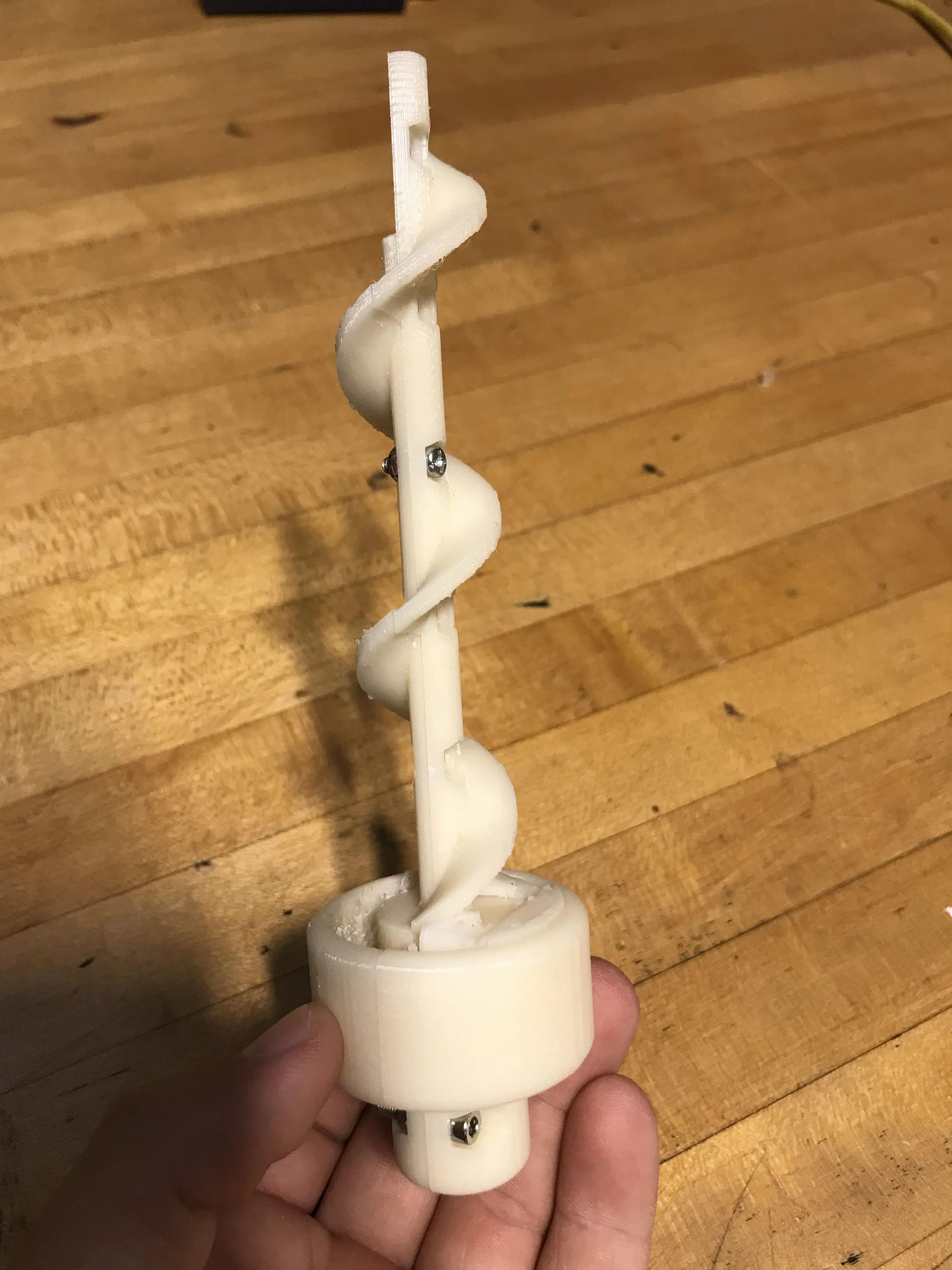Week 1
This past week has been rough as it’s our first almost full week back in shop and it is fairly hot with super high humidity to go along with it. In the shop I have been primarily working on the fish feeder for the biotech shop here in the voc. I have also been working on this website which has been pretty frustrating and rewarding.
The fish feeder was originally built by students before my time, and its main purpose is to feed the fish that the biotech shop has automatically. It is in for a bit of maintenance at the moment because the auger used to deliver the fish food broke. This isn’t the first time this issue has occurred, as last year myself and another student repaired the auger. This time things will be a bit different, as we will be fully printing a new one instead of JB Welding the old one back together, as this has to be much more reliable than it has been over the past year. A massive problem was that the 3d Printers didn’t quite want to work, this caused about 2 days of delay, just solely working on trying to get them running, as there were a multitude of issues. We choked these primarily up to the insane humidity this week. We then started to print the necessary parts on an older, but more robust and reliable printer, which worked without issue. The printing will however run into next week, where I will finish printing the parts, and reassemble the fish feeder.

The other main thing that I worked on this week was my website, which you are reading this on right now. This website utilizes Hugo, a static website generator which means that it has no back end. This is great for my use case as all it has to do is render the front end which is a super light load, and also is incredibly fast, especially coupled with Netlify. Netlify is the free website hosting service that I use. It is incredibly fast due to its imployment of edge computing. Edge computing is where you have a ton of servers around the world, and it connects you to the closest one from wherever you are. Hugo was very easy to get working with a bit of Youtube tourialing. I did this mostly over the weekend as I was a bit bored. It only got a bit frustrating when I tried to customize my theme significantly. This took me a few days working on and off in shop and on my own time to fix it, and I am still not a bit fan of the solution I resorted to. If you would like to learn more about this frustrating adventure there is already a post about it here.
Hugo is jam packed with amazing features. One awesome thing with Hugo is that it is incredibly simple to use after setup because all you need to do is upload markdown files with the content. Another really useful feature is the integrated server feature. When you run the command “hugo server” it opens up a web server locally and displays it so you can see you website before you commit, which is such a useful development tool. The last thing I would like to mention is that to make change on the website or make a post, all I have to do is commit the change to the github repository and it will automatically be live on the website, because Netlify gets the files for building the website directly from the github repository. All in all I really liked using Hugo to build my website as it is fairly easy to use but still allows me to do mostly everything I wanted to do with it, with few hiccups, and making this website has been one of my favorite software related projects i’ve done.
